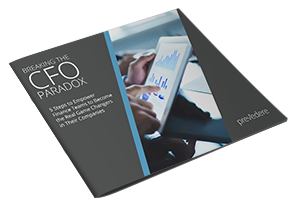Last Updated: January 12, 2021
Despite the promise of big data to provide insurance industry companies with revolutionary insights that will drive businesses forward, the benefits of such data have proven elusive. In fact, less than 20% of insurers had leveraged or were planning to leverage big data. But there is good news, Artificial Intelligence (AI) technology that employs predictive analytics and cloud computing to make sense of big data are putting greater insights into the hands of insurers, allowing them to make smarter decisions and improve profits. AI Technology Advancements Boost Insurance Industry Analytics and Modeling

With AI technology advancements insurers now have the power to analyze the entire world’s economic data and discover hidden leading economic indicators that impact future performance of the industry—all within minutes. Doing so often yields surprises about the actual driving factors of performance, most notably how predictions for the industry and individual product sales can be projected just as they are for consumer-packaged goods. In looking at the insurance industry specifically, the following three economic indicators play critical roles in the performance of insurance companies:
- Consumer sentiment: Monthly consumer sentiment measures how buyers view their current financial situation, the economy in the short- and long-term growth prospects. While this metric will affect different product lines differently, buyer views on their economic health and that of the economy can tell insurers a lot about future demand. For example, demand for annuities may spike when consumer sentiment is in decline as a measure of protection, while demand for auto insurance decreases as people wait to buy new cars and trim their policies to minimize costs.
- Housing permits: Certainly a driver of future demand for homeowners’ insurance, economic data regarding housing permits are also a measurement indicating how people are feeling about the economy overall. With increases, insurers can expect improvements across multiple product lines, as homeowner’s insurance purchases are often linked with personal article policies, as well as life insurance. Housing data is available by geography, allowing insurers to anticipate demand on a granular, local level.
- Population health: Understanding health trends in a population, segmented by age group or geography, can give signals to whether, when, and which products will be purchased. For example, if the aging population’s health largely varies between markets or certain regions, this affects the propensity to buy safeguard products like life insurance and risk assurance policies differently within each market.
In addition to these three driving factors, other indicators are key to the performance of the insurance industry. Insurance products behave similarly to that of retail environments. While this correlation may be obvious with large purchases—when auto sales increase, so does the need for auto insurance—the relationship holds for retail sales at all levels. Income level is also a driving influence, with higher incomes equating to higher insurance sales.
In today’s volatile economy, historical forecast accuracy benchmarks are unacceptable. Contact us to learn how we’re changing the model.
 Download complimentary ‘CFO Playbook Report,’ to explore demand forecasting accuracy tools >>
Download complimentary ‘CFO Playbook Report,’ to explore demand forecasting accuracy tools >>